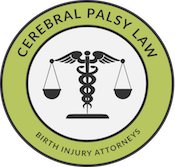The first full week of April marked the American Public Health Association’s celebration of the field of public health and its contributions to the state of American healthcare. The organization assists in the creation of public policy designed to assist in creating optimal health outcomes for the American public.
Medical Error: One of the Leading Causes of Preventable Death and Injury in the U.S.
As part of National Public Health week, we’d like to draw attention to one of the greatest preventable public health crises affecting the United States today: medical errors. According to some landmark studies, 44,000-98,000 patients die each year due to medical errors. Other, more recent, studies state that this number is vastly underestimated, with truer estimates coming in at 400,000 deaths/year.
Public health officials have consistently ranked medical errors within the top ten causes of death in the United States, with some studies placing it as high as the #3 cause of death in the United States (eclipsed only by heart disease and cancer). This shows that people in the U.S. are more likely to be harmed by medical error than by events such as car and airplane crashes, suicides, injury due to falls, poisoning, and drowning. The statistics regarding the number of patient deaths and injuries from medical errors is alarming, and rightly so.
Obstacles to Reducing Medical Error
Policymakers have launched impressive efforts to reduce this threat to patient safety. The difficulty with approaching such a complex issue is that often providers are unwilling to report errors in fear of retaliation. As a result, medical records can be inaccurate or contain significant omissions. This means that the number of individuals harmed by medical errors may balloon to a staggering amount once these inaccuracies or omissions are taken into account.
Medical Error and Birth Injury
The human cost of these errors is incalculable, especially in the sensitive field of neonatal medicine. Newborn babies, who are already fragile, can suffer medical errors at the hands of physicians, which may lead to lifelong disabilities from preventable conditions, such as hypoxic ischemic encephalopathy (HIE), fetal stroke, periventricular leukomalacia (PVL) and umbilical cord complications that were not caught early enough or were mishandled.
Indeed, we have seen numerous cases of cognitive and physical disabilities resulting from physicians’ failures to properly detect or respond to maternal or fetal health issues. These children require lifelong care and support. These needs could have been prevented had physicians followed the standard of care required in their given situations.
National Public Health Initiatives for Reducing Medical Error
National organizations have begun taking notice of the epidemic of medical errors plaguing the United States health system. Some have begun putting programs into place to research and reduce the rates of medical error, especially in the care of high-risk infants. The National Perinatal Information Center is one of these organizations, and we applaud them for taking steps to reduce the rate of medical errors affecting one of the most fragile populations in the United States.
This organization is responsible for developing comparative benchmarking reports, and researching the quality, management and outcome of perinatal services, evaluating perinatal health services programs, analyzing major policy issues in perinatal health care, and providing comparative reports to member hospitals. Recently, the Information Center developed a program called the Premier Perinatal Safety Initiative (PPSI), which consists of three areas of improvement for participating hospitals:
- TeamStepps: A process for improving patient safety by building effective medical teams, identifying member roles/responsibilities and addressing conflict to improve communication.
- SBAR (Situation Background Assessment Recommendation): A briefing strategy for improving nurse-doctor communications and ensuring that patient information is properly shared across shifts.
- Emergency Simulations: A method for training medical staff about common scenarios that can result in birth injury.
As a result of the program, preventable birth injuries were reduced from 1.8 to 1.4 instances per 1,000 births at the participating hospitals. Hospitals with 1,100 births or more per years have been required since 2014 to submit data and statistics regarding six areas of perinatal care in order to become accredited.
How to Get Help If Your Child Was Hurt by a Medical Error
Unfortunately, developing steps to reduce medical errors in the future does not help those who have suffered a medical error already. Medical help for those who have been injured during birth and delivery is often limited to therapy and palliative care.
The lawyers at Michigan Cerebral Palsy Attorneys understand that caring for children who have had a birth injury can be expensive, and that seeking compensation for a birth injury can be time-consuming and stressful for a parent. We can help you navigate this process, working with you to secure your your peace of mind about your child’s future care and support.
Please call us at (888) 592-1857 for a free case evaluation, or use the button on the left edge of this screen to chat with us live 24/7.
Sources:
http://www.ncbi.nlm.nih.gov/pmc/articles/PMC3211566/
http://www.ncbi.nlm.nih.gov/pmc/articles/PMC4140373/
http://www.healthcareitnews.com/news/deaths-by-medical-mistakes-hit-records
